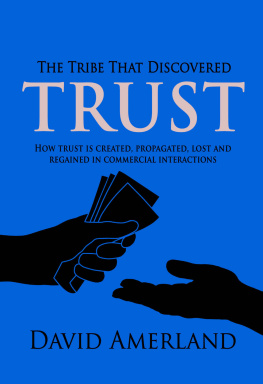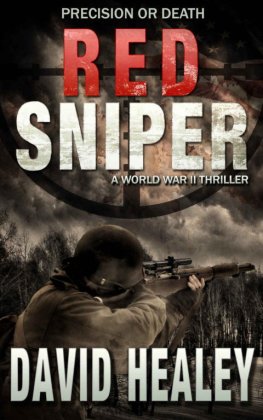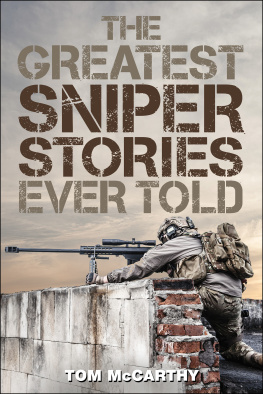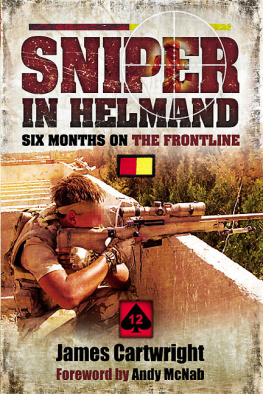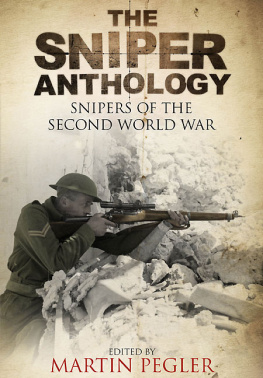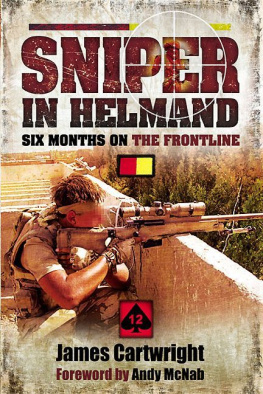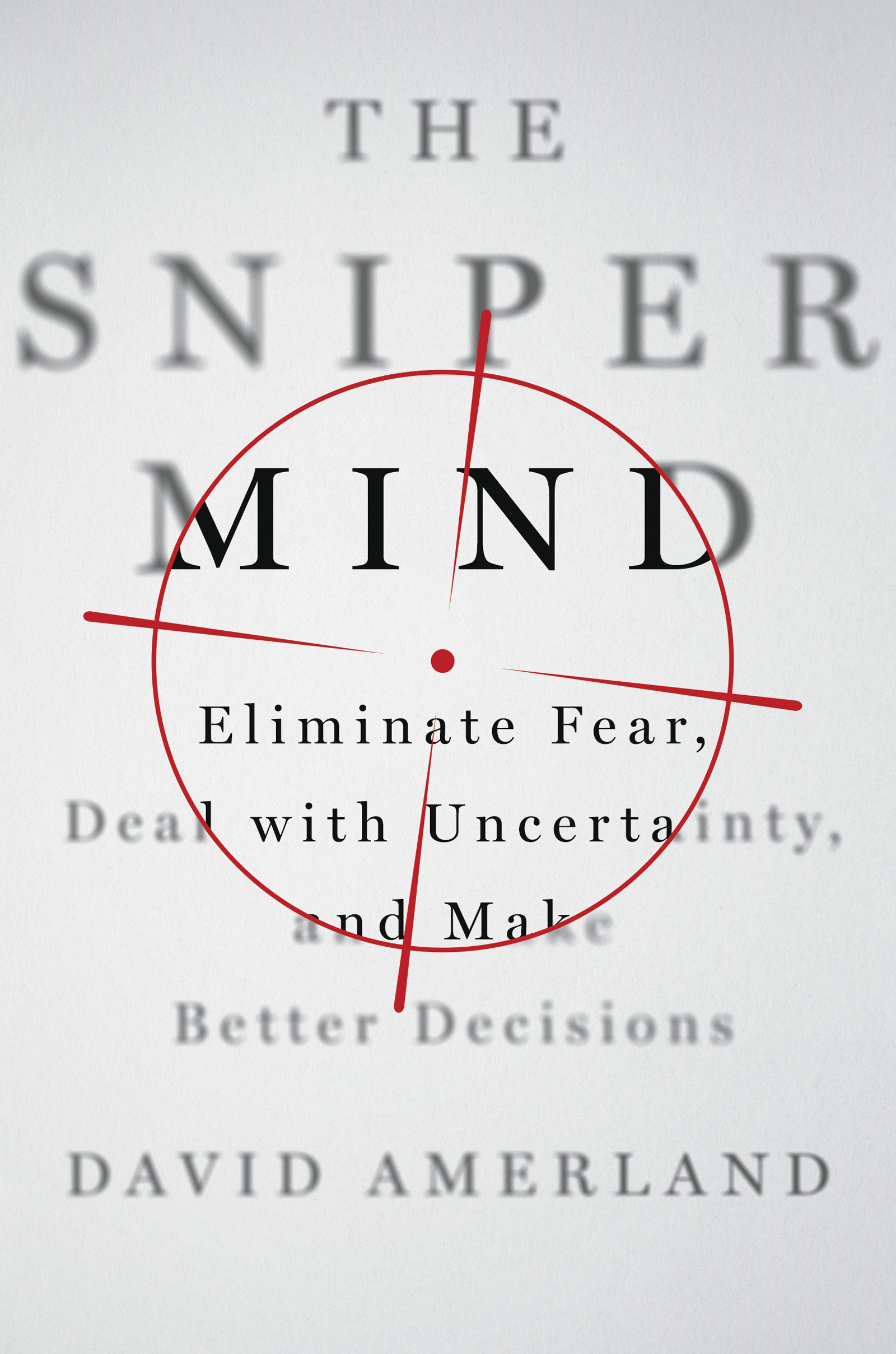Contents
Guide
Pagebreaks of the print version
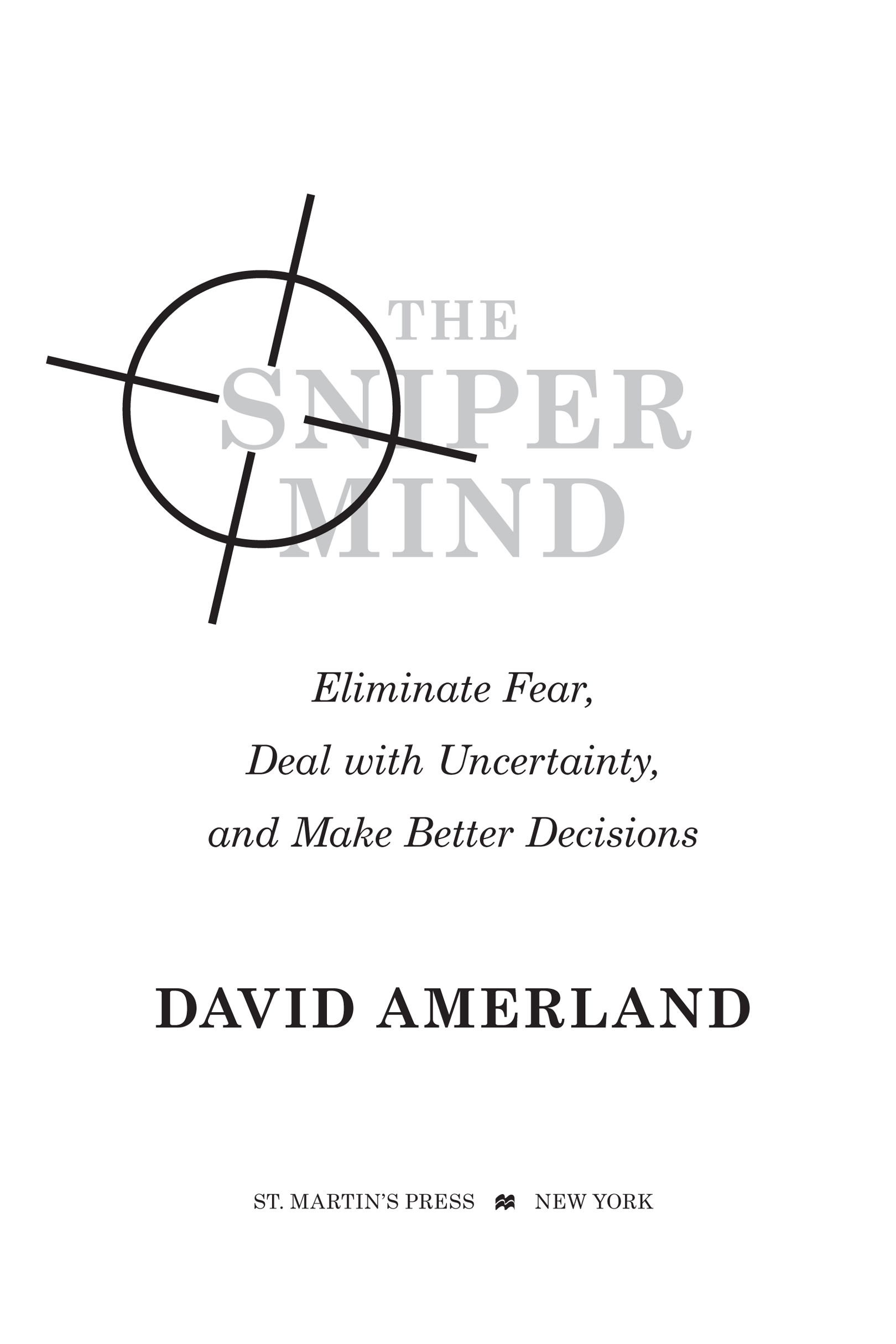
The author and publisher have provided this e-book to you for your personal use only. You may not make this e-book publicly available in any way. Copyright infringement is against the law. If you believe the copy of this e-book you are reading infringes on the authors copyright, please notify the publisher at: us.macmillanusa.com/piracy.
For Ben Moskalensky. In dealing with circumstances beyond his control he displays the fortitude of a trained sniper and the resilience of a true warrior. And for vets everywhere, we never acknowledge your worth enough.
released under Creative Commons License, copyright held by Liam Quinn.
From 600 yards away, a man running at 8.6 miles per hour between two points of cover is a low-resolution dot a few inches high; in military jargon he is called a limited opportunity target. Even when viewed through a high-powered sniper rifle scope as a human-sized, stationary target on a calm day at the range, hitting him presents a physics problem that appears almost humanly impossible to solve.
In 2004 during Operation Vigilant Resolve in the Iraqi city of Fallujah, marine sniper Sergeant John Ethan Place would have to solve it under the most difficult conditions imaginable. The variables that make the shot so difficult are daunting in their number alone. These include distance, elevation, air temperature, and wind speed. Gun barrel temperature. Type of ammunition being used. The targets own behavior. The snipers heart rate and mental equilibrium. Physical factors such as fatigue, mental exhaustion, and even the tiredness that an eye experiences as it looks through a sniper scope for a time longer than thirty minutes.
Operation Vigilant Resolve was a fast push into the city of Fallujah by a combination of US units. Political rather than military imperatives at the time had pushed up the timetable of the operation, which had affected some of the preparation. The day the operation started Place found himself in overwatch position, the only sniper protecting Echo Company. During the battle that raged for thirty days, Place would pretty much clear the area known as Jolan Heights, save countless Marine lives, and act as a fearsome force multiplier robbing the enemy of the tactical advantage of using an urban area they knew well to fight regular US Army forces. Morale among the Iraqi insurgents would plummet.
Over thirty days Place would be credited with thirty-two confirmed kills. His longest shot took down a running insurgent six football fields away. His trained snipers mind successfully calculated the insurgents speed based upon his understanding of average human speed, factored in all the variables affecting bullet trajectory between him and his target, extrapolated the mans behavior as he ducked and ran, and decided to fire a shot aimed 8 feet ahead of him, placing a bullet where the man would be, in order to take him down. He did all that in a window of opportunity just 2.8 seconds long and while in the middle of a raging battle, with all the other distractions that entailed taking place around him.
This book is an examination of such seemingly impossible feats and seeks to understand what makes them possible and how we can learn from them. The trained sniper is a complex fusion of hard skills such as weapons knowledge, situational awareness, tactical experience, and knowledge of ballistics and physics, and soft skills such as emotional stability, empathy, inner calmness, and a stoic acceptance of the hardships associated with a particular set of circumstances.
The premise is simple: If we can all learn to create that same synthesis of hard and soft skills in our own lives, well be better at our jobs, in our relationships, and in our executive decision-making. Our life choices will be better weighed. The outcomes we want to achieve placed within our reach.
Each chapter of this book presents a particular skill set that snipers possess. It explains the science behind it and then how it can be acquired and applied in a business environment. Each chapter starts with a sniper story and also features the ideas, opinions, and thoughts of trained snipers who consented to being interviewed and quoted.
Early business models were based on a hierarchical army structure that reflected not just the command-and-control approach of the military but also its focus on structure and modularity. Business operations, mirroring their military origins, were also modeled on strategic, operational, and tactical procedures. Over time, businesses forgot both the skills and the debt they owed to the army. They increasingly borrowed its language but forgot its culture of discipline and its practice of focus and intent to achieve the desired outcomes.
This book redresses that imbalance. The military of today, like the businesses of today, faces unprecedented operational challenges. Its work is carried out in the open with social media providing transparency in a way that would be unthinkable in the past. Its wars are fought among shifting local populations whose needs have to be taken into account. Businesses also face an incredibly fluid, challenging marketplace which demands a high degree of capability, initiative, focus, and ingenuity from their staffs.
We know that military men are capable of outstanding performance because of their training. A 2006 Korn/Ferry International study reported that ex-military officers are three times more likely to become CEOs than other American men. Ross Perot, Bill Coleman, Fred Smith, and Bob McDonald, who led Procter & Gamble, have all done time in the military.
Each chapter of this book breaks down a specific skill into its constituent parts. It presents its effectiveness. It shows you how to then achieve the transfer necessary and apply it in what you do. In twelve steps, which is what each chapter represents, you learn how to become more focused, more self-aware, more self-assured, more confident in your ability, and more positive in your frame of mind.
If you are in business, if you are running a company, if you are a solopreneur, if you are looking for a way to employ the wealth of knowledge the military has built up over centuries to simply improve your own skill set and your own abilities so that you can become a better version of you, then this is the book for you. The army learned long ago that there is no magic bullet to anything. Average individuals can be taught to do incredible things by training them properly, supporting them adequately, and acknowledging their worth.
Its a simple enough formula that can be applied to any business model. You have to believe in yourself, wrote Sun Tzu in The Art of War . This book shows you how. Use the knowledge. Do incredible things.
David
You make a sniper by taking a human being and reengineering him. You go down to the essence of who he really is and then you build him back up from there
CRAIG HARRISON, THE LONGEST KILL: THE STORY OF MAVERICK 41, ONE OF THE WORLDS GREATEST SNIPERS
T HE VALLEY OF M USA Q ALA is at the central western part of the district by the same name in Helmand Province in Afghanistan. At an elevation of 3,422 feet (1,043 meters) above sea level it is an inhospitable, mostly dry place, whose rough terrain is boiling hot in the summer months and freezing cold in the winter. During the Taliban resurgence it was also the place that saw some of the most intense fighting between Afghan troops, the British forces supporting them, and the Taliban.


